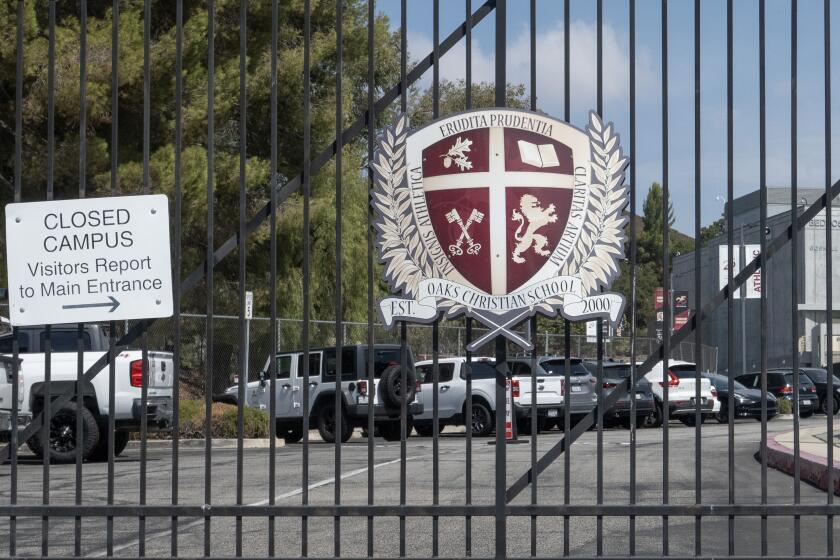AVID Program Puts Youths on College Track
Thirteen-year-old Fabian Ramos now believes that it’s possible for him to go to college. In the past six months, his grade-point average has gone from 2.0 to 3.0., and he is in touch with two universities that, for the next five years, will help him prepare to be a college freshman in 1999.
Fabian is one of 50 seventh- and eighth-graders at Oxnard’s Fremont Intermediate School who voluntarily participate in a program aimed at sending more minorities and low-income students to college.
Called Advancement via Individual Determination, or AVID, the program has been launched in seven schools from Port Hueneme to Simi Valley and is being considered in another eight.
In the program, students learn note-taking techniques, study and organization skills and are tutored by college and high school students in math, English and science.
The group, which meets every afternoon after the regular school day, also listens to speakers, tours universities and learns how to apply for scholarships and financial aid.
“The program has helped me on how to be more organized with my school work, how to write my papers and how to work with other people,” Fabian said. “I have learned a lot, and I want to stick to it until I go to college.”
One of the program’s goals is to enroll students in AVID as early as the seventh grade and keep them in the program until they reach college, said founder Mary Catherine Swanson. Swanson, who used to teach at Clairemont High School in San Diego County, started the program in 1980 after the district’s court-ordered integration mandate bused 500 ethnic minority and low-income students into the previously all-white school.
“I realized that those new kids in our school had slipped through the cracks of education, and what we had to do was to pick up the pieces and make it work,” Swanson said.
Since then, the program has been recognized by the state Department of Education for substantially increasing the number of high school graduates meeting University of California requirements, and it has spread to 349 schools throughout California and to 65 schools in other states, Swanson said.
*
The program is now used at Fremont in Oxnard, Hueneme High School, and five intermediate and high schools in Thousand Oaks and Simi Valley.
Maria Refugio Villalpando, an AVID coordinator with Ventura County superintendent of schools office, said she is working with another eight schools countywide that plan to implement the program by September.
To develop AVID, the county trains the teachers and school officials to interview students and evaluate their academic performance so they can determine who needs the program, Villalpando said. The students do not get course credit for the AVID class, but remain in the program regardless of their grade-point averages.
“We have a large number of students all over the county who need AVID,” Villalpando said. “The students selected for the program are not only Latinos and blacks, but they are also non-minority students who don’t have the background, the means and the support, whether at home or at school, to pursue a college career.”
*
Encouraging students and offering support is part of the daily AVID class.
In a recent Fremont School classroom, Fenya Sekoni, an outreach counselor from University of California, Santa Barbara, asked students what their goals were.
“Have you started dreaming yet? And I don’t mean daydream,” Sekoni said. “Have you thought what type of car you want to drive? What type of person you want to be? Come on, tell me, what do you want to be: A doctor? A teacher? A police officer? A lawyer?”
Sekoni was one of several speakers who come to the class every Friday and talk to students about career possibilities and the requirements for enrolling in a four-year college.
Eighth-grader Daniel Milewskihas figured out two distinct career possibilities: nuclear chemistry or cartooning.
“I am already looking into what math classes I can take in high school,” Daniel said. “And now that I know what I want to be, studying has become more interesting.”
More to Read
Sign up for Essential California
The most important California stories and recommendations in your inbox every morning.
You may occasionally receive promotional content from the Los Angeles Times.










